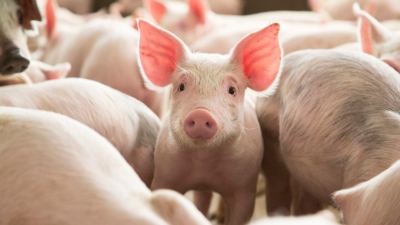The dark side of pig mineral nutrition

When it comes to your animals’ mineral diet, you’ve likely never been thinking about “Star Wars” but just like the characters of the epic movie series, you have a choice to make. Do you go with organic trace minerals, or do you turn to the dark side: inorganics?
It should be an easy choice, but many get led astray by practices that date back over a decade-and-a-half. If you were to look at how many times the human food pyramid has been updated since then, you would see constant improvement. Likewise, how can we keep our animals’ diets in pace with this constant development of nutritional innovation? It starts with choosing a side when it comes to your minerals.
Choose the side with less mineral waste
To examine an animal’s diet, you often have to look at what is coming out the other end. If the animal’s waste has undigested feed in it, that signals two possibilities: One, the diet is over-fortified with an ingredient; or two, the animal is having trouble digesting the ingredient. Recent studies have shown that grow-finish pigs fed a diet with the total replacement of inorganics with organic minerals had reduced fecal manganese, copper and selenium excretion (Alltech-Zhejiang University Animal Nutrition and Feed Science Research Alliance). Another study looking at supplementing organic trace minerals at 0, 50 or 100 percent of the National Research Council (NRC) recommendations showed that nursery pigs and finishing pigs’ trace mineral requirements did not appear to need dietary trace mineral supplementation at the levels recommended by NRC. This research highlights the fact that organic minerals are better absorbed, stored and utilized by the animal. The more that is absorbed by the animal means less waste reaches the environment and less is wasted from the producer’s pocket book.
Choose the side you can trust
Not all minerals are made the same. Inorganics have an added level of contamination risk for both feed and food. This comes in the form of dioxins, PCBs and heavy metals. In the 2015 Asia-Pacific Heavy Metal Survey, where 498 mineral samples were tested, the trend for heavy metal contamination over the past five years showed an average of 19.4 percent. This contamination figure should be scary for producers, as that leads to an increased risk of immune suppression, liver/kidney damage, decreased growth and even contamination of the tissue. It is important to know where your minerals are coming from and that they are being tested to ensure safety for your animals and the food chain. Alltech’s Q+ (Quality Plus) process is a positive release program that guarantees all incoming batches of raw material sources and final product batches are tested for dioxins, PCBs and heavy metals prior to sale, providing a safe and traceable product that producers can trust.
Choose the side that’s better for your pigs’ health and performance
Minerals are an important part of the pig’s diet, but they are not meant to be just another ingredient. Effective mineral nutrition can have a very significant on health and performance. Organic trace minerals have shown to support the number of pigs born (The Ohio State University). That means a lot for producers looking to reduce overall production costs per pig. In addition to reducing costs, another major concern is the health of the pig. Additional studies have shown that trace minerals supplementation supports healthy antioxidant status. This allows the pigs that the producer has invested in to be healthier and more likely to make it to market (Alltech-Zhejiang University Animal Nutrition and Feed Science Research Alliance).
Don’t be lured to the dark side. Learn more about the Alltech® Mineral Management program at alltech.com/pig.















